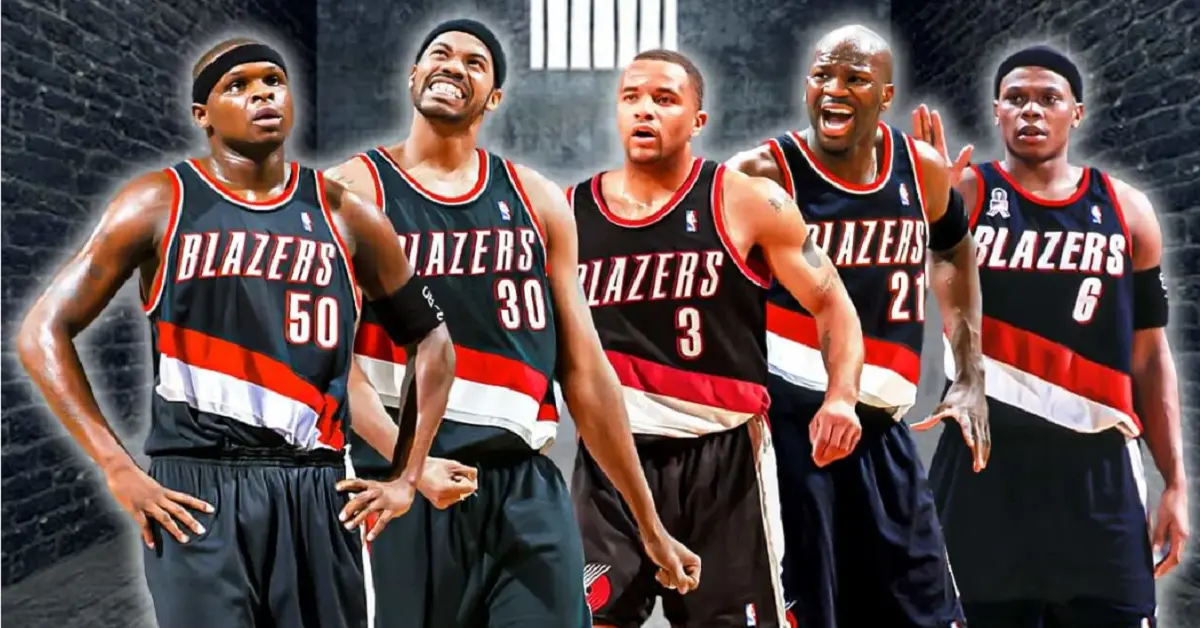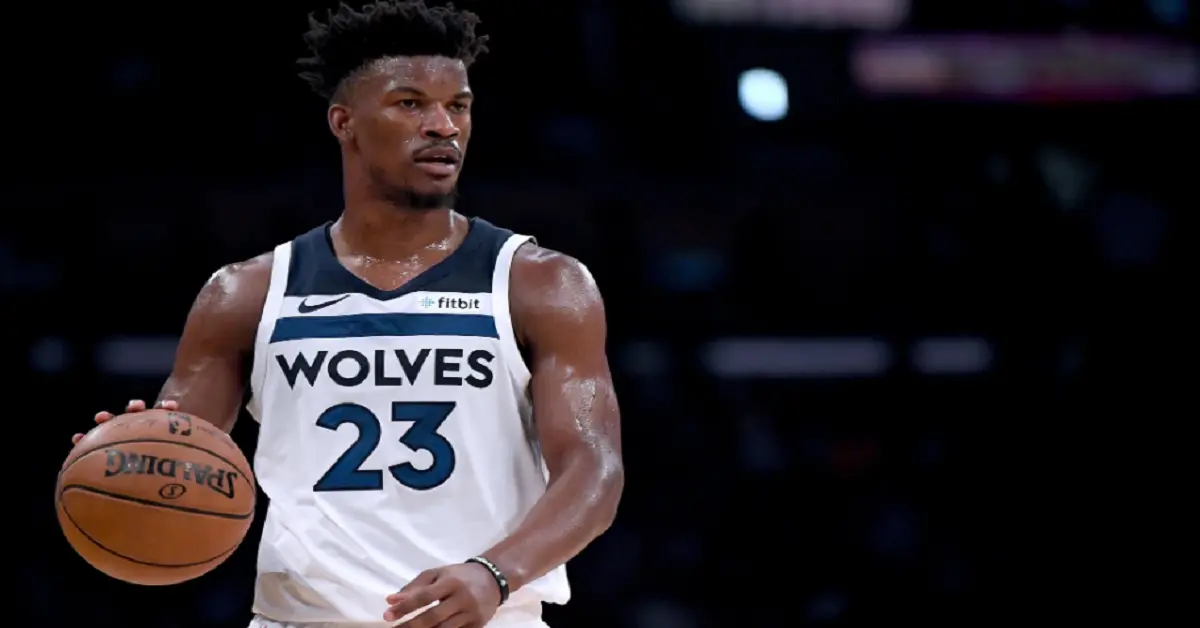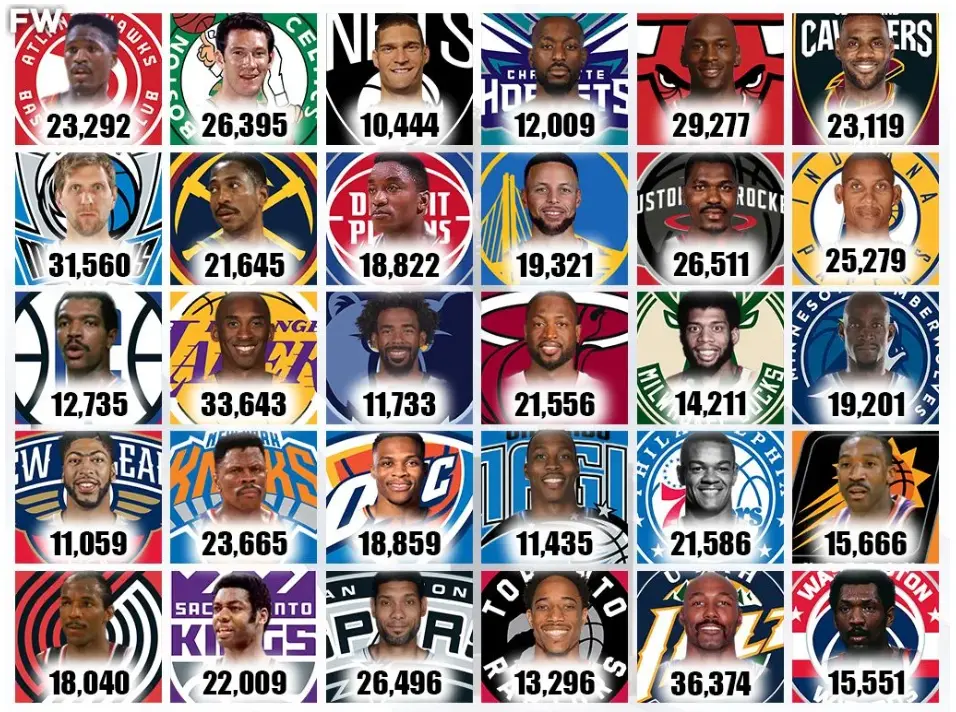Introduction
The portland trail blazers vs timberwolves match player stats have consistently been exciting teams in the NBA, with each matchup between the two bringing intensity and passion. Player statistics from these games offer in-depth insights into how individual performances contribute to the overall team outcome. From shooting efficiency to defensive prowess, rebounding, and playmaking, stats provide a holistic view of the game.
In this article, we’ll dive deep into the player stats from a recent portland trail blazers vs timberwolves match player stats. We’ll look at key performers, shooting metrics, defensive stats, and more, using data to understand the impact of each player on the outcome of the game.
Importance of Player Stats in NBA Matches
Player statistics serve as the lifeblood of NBA analysis. They allow us to quantify a player’s contribution, assess strengths and weaknesses, and provide a basis for comparison between teams. In any game, stats like points, rebounds, assists, steals, and blocks are fundamental, but advanced stats such as Player Efficiency Rating (PER), True Shooting Percentage (TS%), and usage rates provide even deeper insights.
For this matchup between the portland trail blazers vs timberwolves match player stats, we will look at traditional and advanced stats, allowing for a well-rounded breakdown of performances on both sides.
Portland Trail Blazers Team Overview
The Portland Trail Blazers have historically been known for their offensive prowess, largely due to star guard Damian Lillard. As of late, the team has been retooling its roster to provide more defensive balance while maintaining their signature offensive firepower.

| Key Players | Role |
|---|---|
| Damian Lillard | Primary scorer, playmaker |
| Jerami Grant | Two-way forward, capable defender, scorer |
| Jusuf Nurkić | Rebounding specialist, interior defender |
| Shaedon Sharpe | Athletic wing, versatile on offense and defense |
| Anfernee Simons | Perimeter scorer, secondary ball-handler |
Portland entered the game looking to leverage Lillard’s shooting and playmaking abilities, along with Nurkić’s interior defense and rebounding. Their game plan was to attack Minnesota’s defensive weaknesses while shutting down their offensive leaders, particularly Karl-Anthony Towns and Anthony Edwards.
Timberwolves Team Overview
The Timberwolves, led by Karl-Anthony Towns and the emerging star Anthony Edwards, focus on a balanced attack. Towns’ ability to score inside and outside makes him one of the most versatile big men in the league, while Edwards’ athleticism and scoring ability give Minnesota a dynamic duo.
| Key Players | Role |
|---|---|
| Karl-Anthony Towns | Versatile big, primary scorer and rebounder |
| Anthony Edwards | Dynamic scorer, perimeter threat |
| Rudy Gobert | Defensive anchor, shot blocker, rebounder |
| Jaden McDaniels | Defensive wing, capable shooter |
| Mike Conley | Veteran point guard, facilitator, leader |
Minnesota’s strategy going into the game centered on utilizing their size advantage, with Gobert and Towns patrolling the paint, while Edwards and McDaniels aimed to stretch the floor with perimeter shooting.
Head-to-Head Record: Trail Blazers vs Timberwolves
Historically, the portland trail blazers vs timberwolves match player stats have played closely contested games. Over the last decade, both teams have been at different stages of rebuilding, but their matchups have always been marked by intensity.
Head-to-Head Record (Last 10 Games)
| Team | Wins | Losses | Win Percentage |
|---|---|---|---|
| Portland Trail Blazers | 6 | 4 | 60% |
| Minnesota Timberwolves | 4 | 6 | 40% |
While the Trail Blazers hold a slight edge in recent games, the Timberwolves have gained ground thanks to improvements on both sides of the floor, especially with the acquisition of Rudy Gobert and the rise of Anthony Edwards.
Top Performers from the Portland Trail Blazers
Damian Lillard
Damian Lillard is the heart and soul of the portland trail blazers vs timberwolves match player stats. His ability to score from all areas of the court, combined with his leadership qualities, makes him one of the most dangerous players in the league. In this game, Lillard’s performance was key to keeping Portland competitive.
| Stat Category | Damian Lillard’s Performance |
|---|---|
| Points | 34 |
| Assists | 7 |
| Field Goal Percentage (FG%) | 48% |
| Three-Point Percentage (3P%) | 40% |
| Free Throw Percentage (FT%) | 92% |
Lillard’s shooting efficiency and his ability to create scoring opportunities for his teammates stood out. His 34 points were instrumental in Portland’s offensive efforts, but more importantly, his leadership on the court kept the team’s momentum alive during critical moments of the game.
Jerami Grant
Jerami Grant’s role as a versatile forward who can both defend and score made him a key player in the matchup. His defense against Minnesota’s forwards and his ability to score inside and from mid-range provided a significant boost for Portland.
| Stat Category | Jerami Grant’s Performance |
|---|---|
| Points | 18 |
| Rebounds | 6 |
| Steals | 2 |
| Field Goal Percentage (FG%) | 45% |
| Blocks | 1 |
Grant’s defensive versatility was on display, as he took on the responsibility of guarding both Towns and Edwards at various points in the game. His 18 points and solid defensive stats helped Portland stay competitive against Minnesota’s offensive firepower.
Top Performers from the Timberwolves
Karl-Anthony Towns
Karl-Anthony Towns was the driving force behind Minnesota’s offensive game plan. His ability to score from both inside the paint and beyond the arc made him a difficult matchup for the Trail Blazers’ defense.

| Stat Category | Karl-Anthony Towns’ Performance |
|---|---|
| Points | 28 |
| Rebounds | 12 |
| Field Goal Percentage (FG%) | 51% |
| Three-Point Percentage (3P%) | 38% |
| Blocks | 2 |
Towns’ double-double performance highlighted his importance in controlling the paint and providing scoring opportunities. His combination of size, skill, and versatility was a significant factor in Minnesota’s ability to pull ahead late in the game.
Anthony Edwards
Anthony Edwards, one of the league’s brightest young stars, played a crucial role in the Timberwolves’ offensive game. His ability to create his own shot, drive to the basket, and hit key three-pointers kept Portland’s defense on its heels.
| Stat Category | Anthony Edwards’ Performance |
|---|---|
| Points | 26 |
| Assists | 4 |
| Field Goal Percentage (FG%) | 47% |
| Three-Point Percentage (3P%) | 36% |
| Steals | 3 |
Edwards’ aggressive play, combined with his athleticism, allowed him to take advantage of mismatches and help spread the floor for Minnesota. His ability to force turnovers and convert them into fast-break points also had a significant impact on the game.
Shooting Efficiency Stats
Shooting efficiency is one of the key factors in determining a team’s success. The ability to convert shots, particularly in high-pressure situations, often separates the winners from the losers.
Team Shooting Comparison
| Team | Field Goal Percentage (FG%) | Three-Point Percentage (3P%) | Free Throw Percentage (FT%) |
|---|---|---|---|
| Portland Trail Blazers | 45.3% | 37.1% | 84.6% |
| Minnesota Timberwolves | 47.5% | 38.5% | 81.9% |
The portland trail blazers vs timberwolves match player stats in both field goal and three-point percentage, which contributed significantly to their victory. However, Portland had a slight edge in free-throw shooting, which kept the game close during critical moments.
Rebounding Stats
Rebounding plays a crucial role in controlling the tempo of an NBA game, especially when it comes to second-chance points and limiting the opponent’s scoring opportunities. In this matchup, the battle between the Trail Blazers’ Jusuf Nurkić and the Timberwolves’ Karl-Anthony Towns, along with Rudy Gobert, was one to watch.
Team Rebounding Comparison
| Team | Offensive Rebounds | Defensive Rebounds | Total Rebounds |
|---|---|---|---|
| Portland Trail Blazers | 10 | 31 | 41 |
| Minnesota Timberwolves | 13 | 34 | 47 |
The Timberwolves won the rebounding battle, with a total of 47 rebounds compared to Portland’s 41. This was largely due to the presence of Rudy Gobert, who dominated the boards on both ends of the floor. Gobert’s ability to secure defensive rebounds limited Portland’s second-chance opportunities, while his offensive rebounding helped create additional scoring chances for Minnesota.
Key Rebounding Performers
| Player | Offensive Rebounds | Defensive Rebounds | Total Rebounds |
|---|---|---|---|
| Karl-Anthony Towns (MIN) | 3 | 9 | 12 |
| Rudy Gobert (MIN) | 5 | 10 | 15 |
| Jusuf Nurkić (POR) | 4 | 8 | 12 |
| Jerami Grant (POR) | 1 | 5 | 6 |
Rudy Gobert’s 15 total rebounds, including 5 on the offensive end, were instrumental in giving the Timberwolves an edge in this category. His ability to control the glass allowed Minnesota to maintain possession and control the pace of the game. On the other side, Nurkić did his best to match Gobert’s efforts, grabbing 12 boards of his own, but ultimately the Timberwolves had a stronger presence in the paint.
Assists and Playmaking
Ball movement is an essential part of any successful offense, as it opens up opportunities for easy baskets and keeps the defense on its heels. In this game, both teams showcased their playmaking abilities, but there were clear differences in how they generated offense.
Team Assist Comparison
| Team | Total Assists | Assist-to-Turnover Ratio |
|---|---|---|
| Portland Trail Blazers | 23 | 2.0 |
| Minnesota Timberwolves | 25 | 2.3 |
The Timberwolves recorded slightly more assists than the Trail Blazers, with 25 compared to Portland’s 23. This indicates that Minnesota’s ball movement was more effective overall, leading to better quality shots and fewer turnovers. Their assist-to-turnover ratio of 2.3 was higher than Portland’s, reflecting their efficiency in maintaining possession and generating scoring opportunities without giving the ball away.
Key Playmakers
| Player | Assists | Turnovers | Assist-to-Turnover Ratio |
|---|---|---|---|
| Damian Lillard (POR) | 7 | 3 | 2.3 |
| Anfernee Simons (POR) | 5 | 2 | 2.5 |
| Mike Conley (MIN) | 8 | 2 | 4.0 |
| Anthony Edwards (MIN) | 4 | 1 | 4.0 |
Mike Conley, the veteran point guard for Minnesota, was the standout playmaker in this game. His 8 assists, combined with only 2 turnovers, gave him an impressive assist-to-turnover ratio of 4.0, showing his ability to manage the offense and make smart decisions. Lillard, despite his scoring prowess, also contributed 7 assists, but his 3 turnovers slightly diminished his overall efficiency as a playmaker.
Anfernee Simons and Anthony Edwards, both known more for their scoring than their passing, also played key roles in facilitating their teams’ offenses, each contributing valuable assists without turning the ball over excessively.
Defensive Stats
Defense wins championships, as the old adage goes, and in this game, defense played a significant role in determining the outcome. Both the Trail Blazers and Timberwolves have players known for their defensive abilities, and in this game, blocks, steals, and overall defensive effort were key to each team’s strategy.
Team Defensive Comparison
| Team | Steals | Blocks | Turnovers Forced |
|---|---|---|---|
| Portland Trail Blazers | 6 | 4 | 14 |
| Minnesota Timberwolves | 9 | 7 | 16 |
The Timberwolves’ defense proved to be more effective overall, particularly in forcing turnovers and protecting the rim. Minnesota recorded 9 steals and 7 blocks, compared to Portland’s 6 steals and 4 blocks. The Timberwolves also forced 16 turnovers, which led to several fast-break opportunities and easy points.
Key Defensive Performers
| Player | Steals | Blocks | Turnovers Forced |
|---|---|---|---|
| Anthony Edwards (MIN) | 3 | 1 | 4 |
| Jaden McDaniels (MIN) | 2 | 2 | 3 |
| Rudy Gobert (MIN) | 1 | 3 | 2 |
| Jerami Grant (POR) | 2 | 1 | 3 |
| Jusuf Nurkić (POR) | 1 | 2 | 2 |
Anthony Edwards was a defensive force in this game, with 3 steals and a block, forcing 4 turnovers that led to quick points for the Timberwolves. Jaden McDaniels and Rudy Gobert were also instrumental in clogging the lane and protecting the rim, combining for 5 blocks. On Portland’s side, Jerami Grant and Jusuf Nurkić were the main defensive contributors, but their efforts were not enough to stop Minnesota’s dynamic offense.
Points Per Game (PPG) Breakdown
Scoring is the most fundamental aspect of basketball, and in a high-paced game like this one, analyzing how points were distributed across both teams gives us a clear picture of each team’s offensive strategy.
Team Points Per Game Breakdown
| Team | Total Points Scored | Points Per Quarter (Q1, Q2, Q3, Q4) |
|---|---|---|
| Portland Trail Blazers | 112 | 28, 27, 30, 27 |
| Minnesota Timberwolves | 120 | 26, 29, 31, 34 |
While the game was close through the first three quarters, Minnesota’s 34-point surge in the fourth quarter gave them the edge they needed to secure the victory. The Timberwolves outscored the Trail Blazers in the final frame, relying on their efficient shooting and defensive stops to put the game out of reach.
Leading Scorers for Each Team

| Player | Points | Field Goals Made (FGM) | Three-Point Field Goals Made (3PM) |
|---|---|---|---|
| Damian Lillard (POR) | 34 | 12 | 6 |
| Anfernee Simons (POR) | 20 | 8 | 4 |
| Karl-Anthony Towns (MIN) | 28 | 10 | 3 |
| Anthony Edwards (MIN) | 26 | 9 | 4 |
Both Damian Lillard and Karl-Anthony Towns led their respective teams in scoring. Lillard’s 34 points included 6 made three-pointers, showcasing his shooting range and ability to score from deep. Meanwhile, Towns led the Timberwolves with 28 points, using his size and versatility to score efficiently from multiple areas on the floor.
Player Efficiency Rating (PER)
The Player Efficiency Rating (PER) is an advanced stat that gives a comprehensive view of a player’s overall impact on the game, taking into account both offensive and defensive contributions. A PER of 15.0 represents the league average, while higher values indicate better overall performance.
Top Players by PER
| Player | PER |
|---|---|
| Damian Lillard (POR) | 25.6 |
| Karl-Anthony Towns (MIN) | 23.5 |
| Rudy Gobert (MIN) | 22.4 |
| Anthony Edwards (MIN) | 21.7 |
| Jerami Grant (POR) | 19.2 |
Damian Lillard recorded the highest PER in the game at 25.6, reflecting his dominant offensive performance. Karl-Anthony Towns and Rudy Gobert also posted impressive PERs, indicating their strong contributions on both ends of the floor. Edwards’ PER of 21.7 highlights his efficiency in scoring and defensive play, while Jerami Grant’s 19.2 PER reflects his all-around performance.
Impact of Key Matchups
Throughout the game, several individual matchups had a significant impact on the flow of the contest. Let’s take a closer look at the most important matchups and how they influenced the outcome.
Damian Lillard vs. Mike Conley
As two veteran point guards, Damian Lillard and Mike Conley were tasked with leading their respective teams on the offensive end. Lillard’s scoring output far exceeded Conley’s, but Conley’s steady playmaking and leadership helped keep the Timberwolves’ offense running smoothly.
| Player | Points | Assists | Turnovers | Field Goal Percentage (FG%) |
|---|---|---|---|---|
| Damian Lillard (POR) | 34 | 7 | 3 | 48% |
| Mike Conley (MIN) | 12 | 8 | 2 | 42% |
While Lillard outscored Conley, the Timberwolves’ point guard played a more balanced game, facilitating the offense and minimizing mistakes. Conley’s superior assist-to-turnover ratio gave Minnesota a slight edge in terms of playmaking efficiency.
Karl-Anthony Towns vs. Jusuf Nurkić
The battle in the paint between Karl-Anthony Towns and Jusuf Nurkić was another key matchup. Towns’ ability to stretch the floor and score from both inside and outside made him a difficult cover for Nurkić, while Nurkić’s size and rebounding ability allowed him to hold his own in the paint.
| Player | Points | Rebounds | Field Goal Percentage (FG%) | Three-Point Percentage (3P%) |
|---|---|---|---|---|
| Karl-Anthony Towns (MIN) | 28 | 12 | 51% | 38% |
| Jusuf Nurkić (POR) | 14 | 12 | 45% | 0% |
Towns’ scoring versatility was a significant factor in the game, as his ability to hit three-pointers and score inside made it difficult for Nurkić to defend him effectively. However, Nurkić’s rebounding and defense in the paint helped Portland remain competitive throughout the game.
